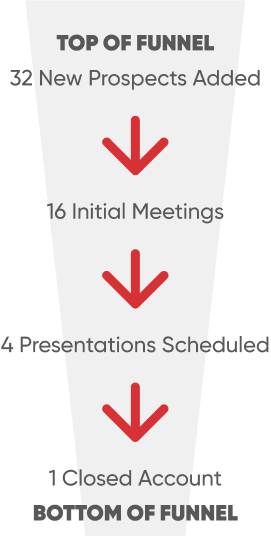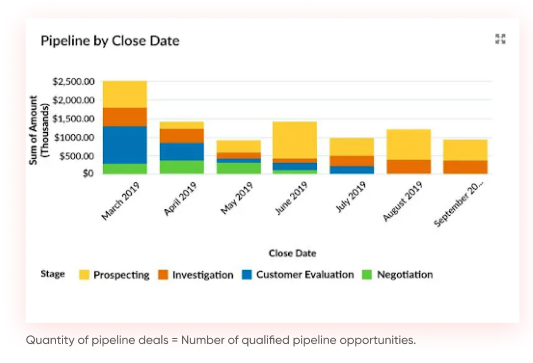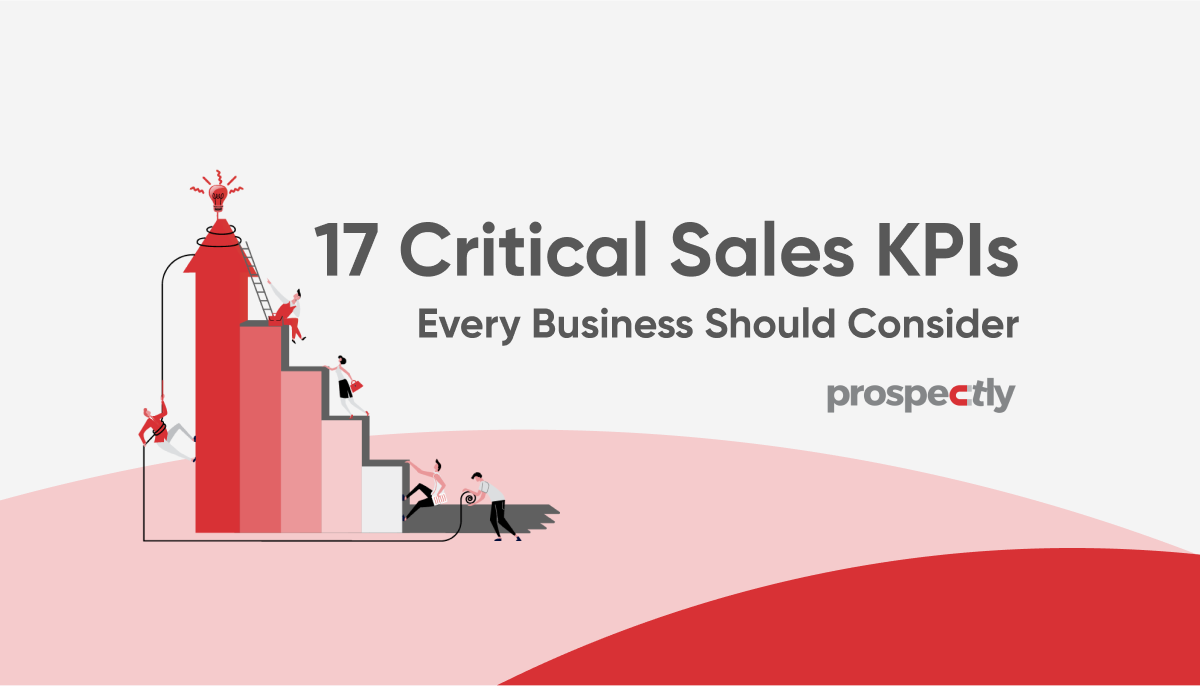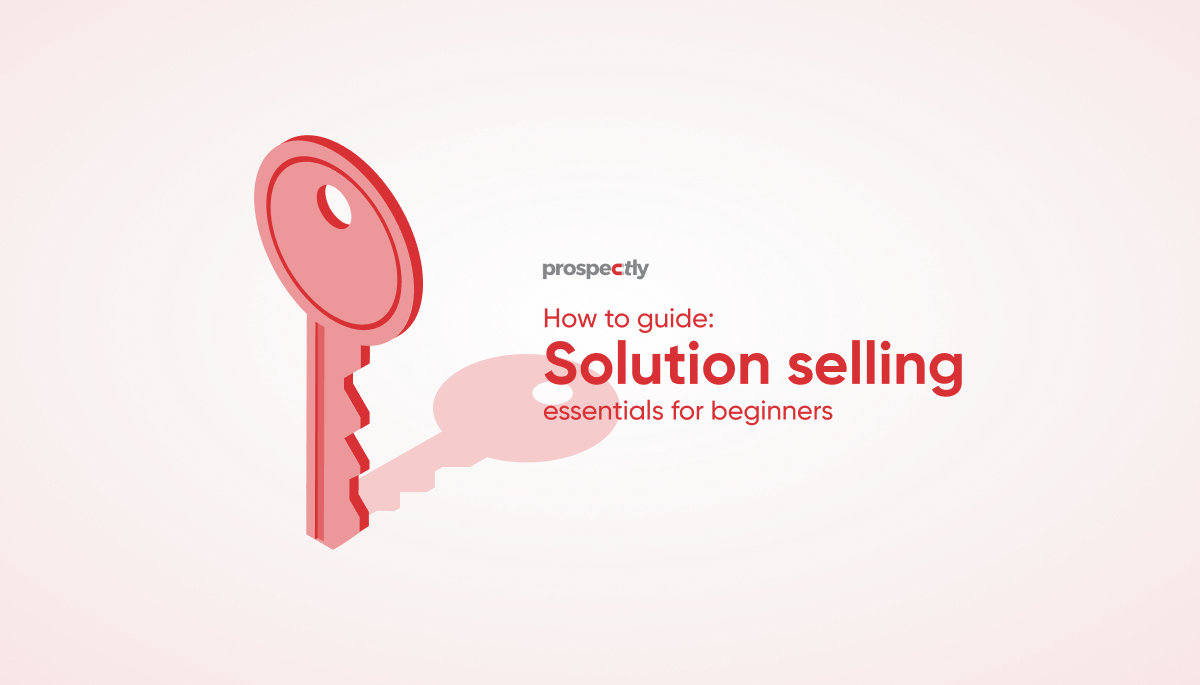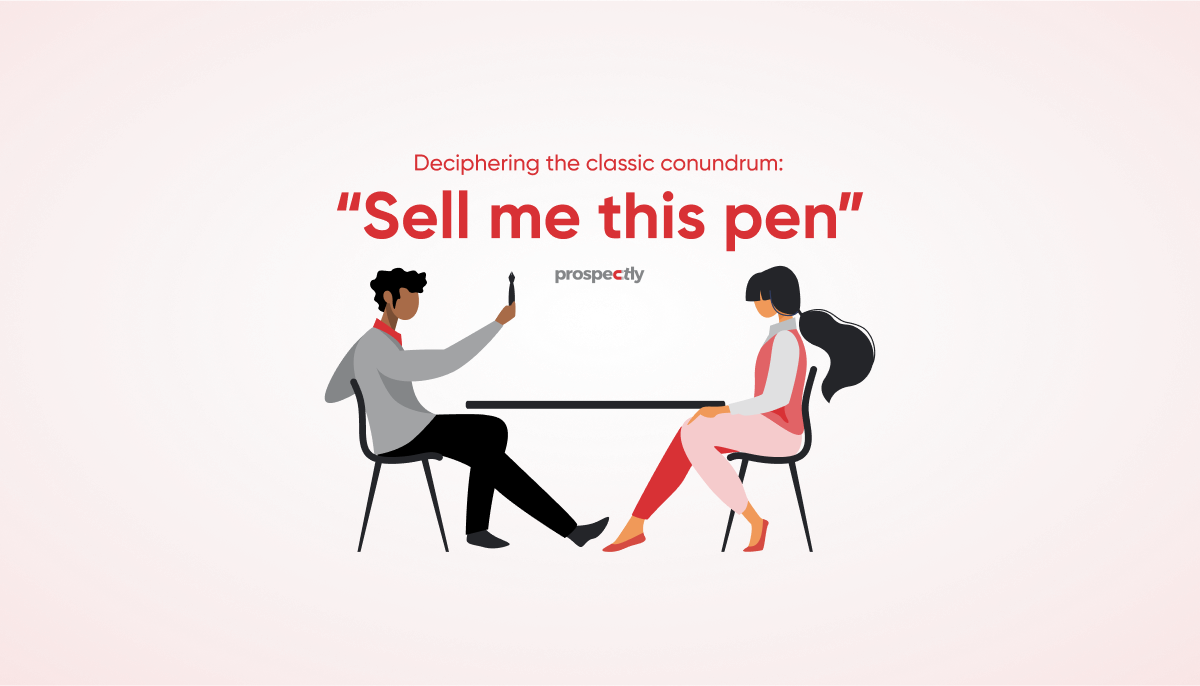The sales pipeline master guide: How to build, manage, and measure
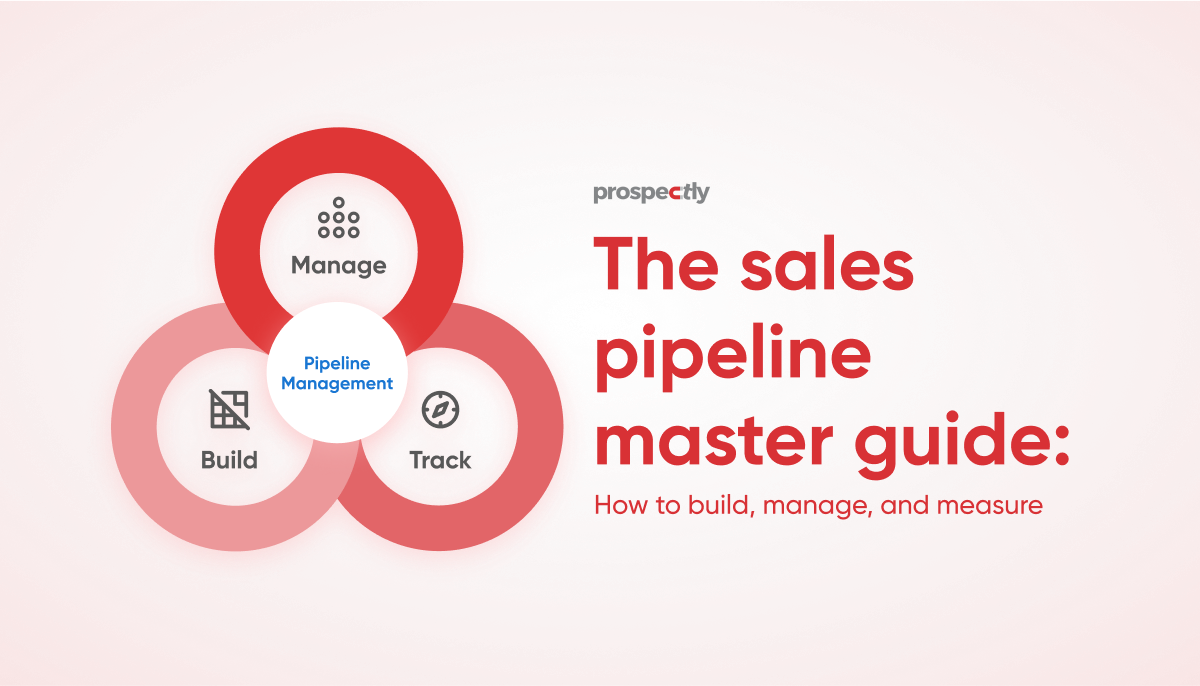
In this sales pipeline master guide, you’ll learn about three crucial things: building and managing a healthy sales pipeline and tracking its relevant metrics. Continue reading to discover how you can hit your quota by creating, managing, and measuring your sales pipeline.
What is a sales pipeline?
A sales pipeline is several stages showing the movement of a prospect from being a lead to a buyer. Each sales stage gives your business a visual representation of where your prospect is in the buying process. The sales pipeline structure also reveals the sales activities in each step your reps need to concentrate on to close more deals and hit their quota.
In a nutshell, it answers the question: how can your business lead potential customers to enter the sales process and convert them into buyers?
Let’s consider two sales pipeline definitions to understand the concept fully.
Sales pipeline definition
The sales pipeline is a tool for converting leads into sales. It provides sales leaders with a visual representation of the different stages of the sales process (such as when a prospect becomes a qualified lead or when salespeople should follow up with a lead).
The total VALUE of potential deals from customers that your business could close. Also referred to as “Pipeline Value,” This shows a potential investor how much revenue your business could potentially book in the near future.
The last sales definition emphasizes the value of your forecasted deals. And that’s what your sales pipeline also shows you.
Some sales reps use a sales pipeline and sales funnel interchangeably. Are they the same?
Sales pipeline vs. sales funnel
The main difference between a sales pipeline and a sales funnel is the focus of each system in the sales process. While the sales pipeline concentrates on the seller’s activities, the funnel shows you the prospects’ number and conversion rates.
The sales funnel deals with how many prospects you have in each sales stage of your pipeline and the conversion percentage. It also looks at the sales process from the customer’s point of view; the buyer’s journey.
See a great example below.
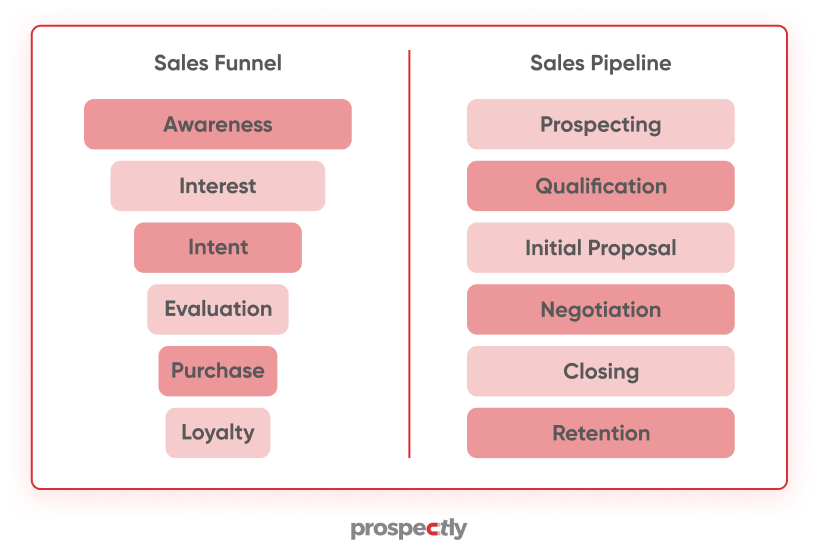
The sales funnel and sales pipeline are also similar because of aligned stages and the same funnel-like structure. They both have a wider funnel at the top showing the prospect’s movement from the awareness to the purchasing decision stage.
Now let’s dive into more details about the sales pipeline stages and their sales activities. We’ll also look at how you can build a strong sales pipeline.
Sales pipeline stages and sales techniques
The sales pipeline stages show your sales reps where your prospects are in the purchasing process. Sales reps become aware of the sales techniques to move their potential customers down the sales pipeline.
Before you start feeding your pipeline, consider these critical points.
- Determine your sales goal or quota
As a sales manager, your reps must understand their sales goals. They’ll know what your company expects from them. Depending on what your business does, here are some examples of activity goals within a rep’s control.
- Knock five doors per day
- Schedule four appointments per week
- Send three proposals per week
Goals can also focus on boosting revenue monthly or annually. An example could be increasing month-on-month revenue by 5%. Or you can set up an objective to reduce customer churn by XY percentage.
Have one-on-one meetings with your salespeople to discuss their sales goals.
- Work out your closing ratio
According to your set sales objectives, the next step in building your pipeline is calculating your closing ratio.
A closing ratio “measures the number of business proposals and presentations by salespeople that are converted into actual sales. It also measures the number of business deals that sales experts close, which is used to evaluate how effective the salespersons are.”
You can work out your closing ratio with this formula:
Actual sales made by sales representatives ÷ sales proposals sent out (×100)
Here’s an example:
James sent out 20 business proposals and converted 5 into actual sales. So, his closing ratio is 5/20 × (100), which is 25 percent.
Why is it crucial to determine your closing ratio before building your pipeline? Danielle Cumbee, the director of sales integration at Spectrum Automotive Holdings, states that: “There is a level of skill and personality that contributes to sales success, but the main ingredient to success is in the numbers. Many of the best salespeople you will meet found their success because they understood the equation, which in its most basic form is: You need to put enough into the funnel to get something back out.”
After figuring out your closing ratio, you’ll know what you must do to close more deals. In the above example, James’ closing ratio is 25 %. As a result, he needs to make not less than four presentations per month. And to schedule those presentations, James will need to organize first-time meetings with 16 prospects.
Break up your sales pipeline into stages
Once you’ve identified your sales goals and closing ratio, focus on the numbers to achieve your sales targets. Also, create sales stages showing your metrics. Here’s an example.
James can visualize his pipeline and know what he must do to close more deals. With this in mind, let’s jump into the sales pipeline stages and see how James can build a healthy pipeline.
Prospecting
All SDRs agree that prospecting is the feeder to have a healthy pipeline. Prospecting is hunting qualified prospects to feed your pipeline to close more sales for your company. There are several ways of prospecting, ranging from email, cold calling, social selling, video, text messages, to social media and more.
Like Trent Dressel, an account executive, would you like to make over $12 million of pipeline sales? He has made 40 000 cold calls. Here are some sales prospecting techniques that Trent recommends that have worked for him at his company.
Warm prospecting
Warming conversations create relationships with your prospects first to gain trust and recognition. Sales reps can warm-up conversations through lost opportunities, cross-selling, and interesting moments.
- Find lost opportunities
The first thing is to run a list in your Customer Relationship Management software. Your goal is to uncover all the prospects that your business has spoken to in the last year. You can also do this at the end of each year or even monthly.
Look for those potential customers your sales reps have engaged with in the past. Or those prospects you tried to sell a product to, but it didn’t work out. Once you’ve all the prospects’ contact details, start cold calling.
When you call, let them know that you appreciate that they once interacted with your company. Explain that you have made comprehensive reviews of your products and would like to share the latest developments that can help their business. Ask for a scheduled meeting on a specific date and their availability.
- Cross-selling
Reps can also use cross-selling to warm-up conversations. Cross-selling involves selling an existing customer a different product line of your business. The approach only works if your organization has varied multiple products.
In this method, let’s say you’ve got product line A and product line B. The first step is going through a list of customers currently spending on product A. After this, get as much info as possible on that group, company, or buyer persona. With all the contact details in place, you can reach out to the decision-makers.
First, thank them for purchasing product line A and tell them that you’ve another relevant product that can solve their problems. Ask for a meeting to make a presentation.
- Interesting moments
Interesting moments occur when potential customers engage with your company’s materials. The prospects could read your blog, download a resource, attend a webinar, listen to a podcast, request sales contact, and more. To strike while the iron is still hot, make follow-ups to the likely buyers soonest.
Run a report for the last six months of all prospects interacting with your business via its assets. Create your sales cadence to initiate communication with them.
General prospecting or headhunting
For this technique, you’re dealing with clients who’ve made bookings with your business. To organize these bookings, you should prioritize them according to industry, revenue, and employee account. You want to determine potential companies since not everyone will turn out to be a buyer for your products.
Before contacting relevant people in those businesses, understand how your solution can help a specific industry deal with its pain points. Let’s take industry, for example. Check for the top performers in that industry in terms of revenue. Do the following to connect with your potential buyers:
- Have a list of the top-performing sectors fitting your buyer persona
- Go through the list one by one to identify likely customers
- Check your records to see if each company’s salesforce has spent on your products
- If there’s no previous sales activity, it shows that you’ve got a blank canvas. You can now start prospecting the company’s relevant stakeholders.
- Find the top buyer persona for each organization on LinkedIn Navigator
- Cross-check with Zoominfo to verify if the personas are genuine
- Add all verified buyer personas into your sales cadence or sequence
- Warm-up your prospects through a multiple channel approach
Prospecting is like gas to your car. “Sales is entrepreneurship, and your pipeline is your business — you should be reviewing and analyzing this on a regular basis to grow your business,” Danielle says.
Qualifying leads
Earlier, we mentioned that it’s critical to qualify your leads to concentrate your effort, time, and resources on those that match your buyer persona. You want to remove prospects from your list that lack the pain points your product solves or those without a purchasing need.
You can do the following to gauge the likelihood of prospects buying your product.
- Offer them a free resource, a whitepaper, an eBook, or a case study to see if they’re interested
- Start an initial discovery call to learn more about the prospect
- Find out if the prospect is influential in the buying decision in their company
- Use lead scoring to determine prospects with a high possibility of buying customers.
Engagement/relationship
Your pipeline is getting narrower as it becomes clear which prospects are highly likely to engage with you. The primary goal is to build a relationship with your prospect because it’s possible not to have a sale even after an excellent presentation. You also want to understand your prospect’s problems to align your product with their pressing needs.
Before meeting with your potential clients, let them know what your session will be about. It’s critical to highlight how your product is a perfect fit for your prospect during your engagement. When you’re clear about what the potential buyer needs, you can make a demo.
Also, include these aspects below.
- Weave in your knowledge about the prospect’s industry and business into the discussion
- Focus on building a long-lasting relationship instead of a sale
Proposal
Your prospect may have indicated that they’re interested in your product at this stage. It’s time to offer a sale. Here are some things you can do to strengthen your proposal.
- Reemphasize how your company can fix your prospect’s pain points
- Repeat the pricing info and show how the product’s benefits weigh more than its cost
- Show how your product is different from the competition in terms of ease of use, price, pros, etc.
- Keeping mentioning the prospect’s name now and then to personalize your sales pitch
- Offer the potential buyer validation proof, such as testimonials, third-party references, and case studies
- Incorporate a video to demonstrate the strengths of your product
- Avoid exaggerating what your product can do; rather be transparent and honest
Another crucial thing is ensuring that your meetings have the key decision-makers to get buy-in from everyone.
Negotiation
After presenting your proposal, there’s a possibility that your prospect can have objections. You may need to relook into your offer by adjusting the price, tweaking the proposal, and more.
Closing the deal/signing the contract
Assuming the prospect accepted your final proposal, the last pipeline stage is signing the contract. If this happens, you would have won the deal. But it’s not the end of the story.
You can continue interacting with existing customers to ask for referrals, renewals, cross-sells, and upsells. These activities will constantly keep your pipeline healthy.
A lost deal occurs when there’s no sale. However, a no sale doesn’t mean it’s over with the client. You can add these clients to your CRM for your future warm prospecting.
The other critical sales activity is pipeline management. Let’s consider how you can be effective in managing your pipeline.
How to be more effective in managing your sales pipeline
Pipeline management is crucial. Here’s why. “Proper sales pipeline management is imperative for business growth,” Forbes expert. And for a sales rep to hit their quota, they need to understand that “maintaining a pipeline is akin to running a business: it takes focus, strategy, discipline, and execution,” according to John Rampton, Entrepreneur, and Investor.
There are multiple tips for managing your pipeline to ensure that your sales team hits its quota. Check them out below.
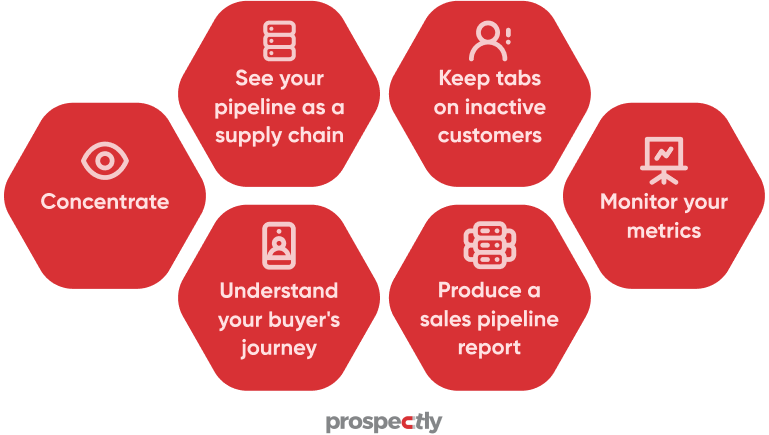
- Concentrate
To build and manage your pipeline requires getting rid of all distractions. You need to focus your mind, time, effort, and resources on knowing the right audience you should target. You can check how you’re spending your time each day by examining your daily activities after prospecting.
One way of using your time wisely and efficiently is to block time for inbound and outbound prospecting, doing follow-ups, and other sales activities.
- See your pipeline as a supply chain
Each of the sales stages is interconnected. To close more deals, you’ll need plenty of proposals, which in turn depend on scheduled meetings and demos. Presentations also rely on the number of qualified leads who end up being your prospects.
Seeing your pipeline as a supply chain makes you discover clogs in the sales system that block you from hitting your quota. Qualify your prospects to remove those that aren’t likely to close. Eliminating time wasters to remain with significant opportunities and high-value prospects should be daily.
- Understand your buyer’s journey
Knowing where your prospects are on the customer’s journey is vital. You’ll know what sales techniques or prospecting methods to use to reach out to your potential customer.
If you’re dealing with existing customers, you can straightaway ask for another meeting to demonstrate a new product. But new customers who’ve never had an engagement with your business require plenty of warm-up in the awareness stage of the buyer’s journey.
Your CRM software should come in handy to help you understand where your clients are in the buying process.
- Keep tabs on inactive customers
Your sales pipeline should always contain prospects and not suspects. That’s because it’s time-consuming to zero in on suspects. If a prospect remains in one sales stage and can’t move on to the next step, you need to remove them.
However, create a drip campaign for inactive prospects. Also, continue with follow-ups and personalized messaging for active potential buyers.
- Produce a sales pipeline report
As a sales leader, it’s also essential to know the value and the number of your leads. A sales report can show your deals’ worth in each sales pipeline stage. Reps can also monitor every deal status and know whether they’ve got enough deals to reach their sales targets.
There are several tools you can use for sales pipeline tracking and reporting. They also have sales pipeline dashboards to give you a visual representation of your opportunities.
- Monitor your metrics
Another critical point about your pipeline is that it must be “three times your quota.” For this to happen, you should track your metrics to enable you to reach your goals.
A rep should start by considering the number of leads they’re receiving from their company and the ones they’re creating themselves. Examine which leads are qualified or closing. Ensure that you’ve got the right leads that satisfy your customer profile.
Low-value leads mean that you’ve to check the number of calls you’ve made to qualify leads. Did you make enough calls to the right people? Also, if you’ve made many calls, you should focus on improving your messaging.
A sales rep could also be good at engaging but weak in qualifying. In this case, the sales manager should train the representative to qualify leads. A low closing ratio requires that you perfect your demos or presentations and closing techniques.
There are more sales pipeline metrics you can monitor for sales pipeline management.
Critical sales pipeline metrics to track
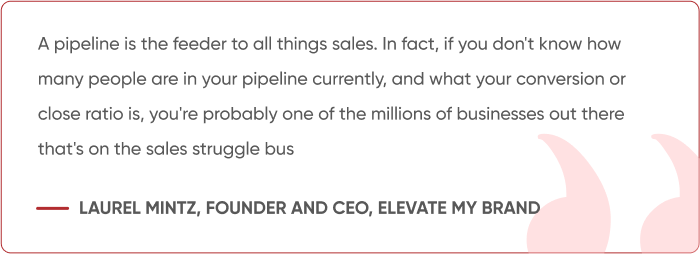
- The number of pipeline deals
As a sales leader, you should know how many deals your salesforce is chasing. It’ll give you an idea of the qualified pipeline opportunities for your company.
Quantity of pipeline deals = Number of qualified pipeline opportunities.
- Average win rate
The average win rate tells you the percentage of sales funnel opportunities your reps can convert into sales. You can use the metric to improve areas where your representatives are lacking or to try different sales strategies.
Average win rate= Closed leads➗ Opportunities, Number of leads, or meetings
Example: 200 leads and 5 closed leads = 2,5 % win rate
50 opportunities and 2 closed deals = 4 %-win rate
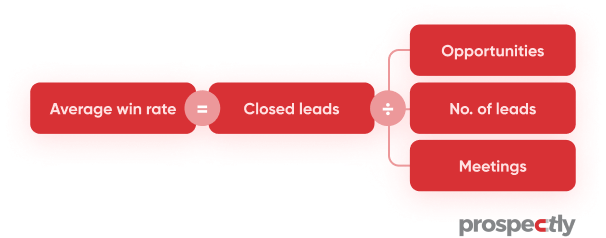
- Pipeline value
Pipeline value is the total value of your sales pipeline deals. It shows your forecasted revenue and helps you develop suitable strategies to reach your revenue goals.
The total value of pipeline deals= Pipeline value
Example: Sum up the value of every deal to get your total pipeline value.
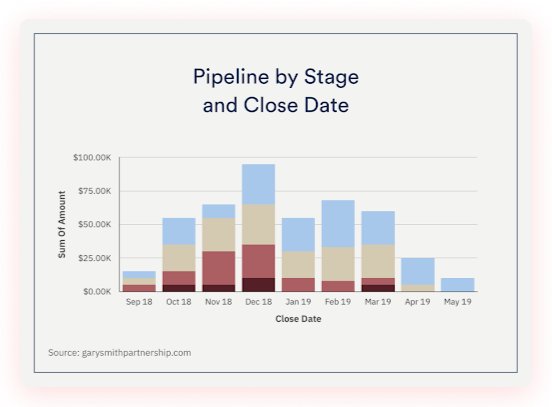
- Conversion rate or lead opportunity ratio
The sales pipeline metric looks at the number of opportunities your sales team can turn into leads. It’s an important metric, too, as it shows the amount of effort your reps must put into converting the opportunities into more leads. However, it would be best to be cautious because it reveals not much about what your SDRs should do to generate sales opportunities.
Conversion rate = number of leads (converted to opportunities) ➗ total pipeline deals or closed deals
Example: 100 leads and 10 of these leads converted into leads
10➗100= 10 % conversion rate

Sales pipeline templates
To know the status of every deal, you can also use a sales pipeline template. HubSpot’s sales pipeline CRM allows you to engage with your prospects and track every deal.
Managing your pipeline also requires intelligent sales pipeline software to automate your sales processes and hit your goals faster. See some examples below.
HubSpot Sales
HubSpot Sales is ideal for:
- Automatically sending follow-up emails to your potential customers
- Checking the open rate of your emails
- Tracking your whole pipeline effortlessly
- Monitoring all the personal emails that you send to customers
Pricing model: Paid subscription
LinkedIn Sales Navigator
LinkedIn Navigator is best for:
- searching the correct contact details and email addresses
- prospecting top decision-makers for Fortune 500 companies
- Connecting you with prospects through InMail
Pricing model: Paid subscription
Liverscribe
Liverscribe is a perfect tool for:
- taking down notes during your scheduled meetings or demo or cold calling
- creating a digital copy of your notes
- syncing all the notes with your iPhone, iPad, and Android devices
- accessing your info by sending it as a PDF to Microsoft Word or other compatible note-making tools.
Pricing model: Once-off purchase
See Liverscribe pen in action.
Prezi
Prezi allows you to:
- make visual, interactive, and stimulating presentations to grab your prospect’s attention.
- create logical and simple demos that your customers can follow.
- highlight crucial points during the presentation by zooming them in
Pricing model: Paid subscription & Free trial
Wrap up
Prospecting is the most critical sales activity to build and feed your sales pipeline. You also need to chase good leads and not leeches that fit your customer profile. Qualifying prospects is also vital to close more deals. High-value prospects and not suspects are the ingredients for your success in hitting your quota. Sales metrics, such as your closing ratio, are crucial to driving the stages of your sales in your pipeline. Sales pipeline management involves monitoring your incoming sales opportunities throughout the customer’s journey.
